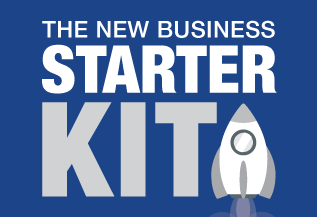Refinancing Your Home Loan
Stage 7: Apply for New Loan
Once you are ready to refinance, the next step is to prepare for your refinance application. When refinancing, lenders will be looking for the same things you had to provide when you applied for your existing loan. Most likely you will be required to provide more information due to government additional legislations.
There are hundreds of home loans available, with new products emerging all the time. The main types of home loans, which form the basis of all the new products, are: variable loans, fixed loans, split loans, interest only loans and low documentation (low doc) loans.
Here’s a snapshot of the main types of home loans available for your to choose from:
Variable Loans
Standard variable loans are the most popular home loan in Australia. Interest rates go up or down over the life of the loan depending on the official rate set by the Reserve Bank of Australia. That means that if interest rates fall, then your loan repayments will go down. It also means that if interest rates go up, your loan repayments will increase according to the official interest rate.
The Reserve Bank of Australia meets every month to decide what to do about interest rates depending on the world economy and Australia’s economy. Often they leave it unchanged. It rises or falls by half a percent at a time, so a rise in interest rates is a slow and gradual process. Even so, be prepared for the difference that a rise in 2 or 3% could cause to you in your loan repayments.
In a standard variable loan your regular repayments pay off both the interest and some principal.
Many standard variable loans allow you to make extra repayments to your loan, so you can pay it off faster.
Some standard variable loans have a redraw facility. This means that if your make any additional payments to your loan you can take that money out again if you need to. If you get a bonus payment on your tax return, for example, you can put it into your redraw facility. In the redraw facility that extra money is paying down your loan. If you ever need that money for any reason, you can take it out and use it.
There are also basic variable loans which may have a lower interest rate but not offer the benefits of repayment flexibility and a redraw facility.
Fixed Loans
In a fixed loan the interest rate is fixed for a certain period, usually between one and five years. This means your regular repayments stay the same regardless of changes in interest rates. At the end of the fixed period, you can decide whether to fix the rate again, at whatever rate lenders are offering at that time, or move to a variable loan.
The benefits of a fixed loan are that it’s easier to manage your household budget because you know exactly how much you need to repay your home loan. You won’t be affected by changes in interest rates at all, whether they go up or down.
A fixed loan may have restrictions on the amount of extra repayments you can make during the fixed period of the loan and if you exit the loan early you may need to pay a fee.
Split Rate Loans
Your loan amount is split, so one part is variable, and the other is fixed. You decide on the proportion of variable and fixed. You enjoy some flexibility of a variable loan along with the certainty of a fixed rate loan.
Interest Only Loans
You repay only the interest on the amount usually borrowed for the first one to five years of the loan. Because you’re not paying off the principal, your monthly repayments are lower. At the end of the interest-only period, you begin to pay off both interest and principal. These loans are especially popular with investors who plan to pay off the principal when the property is sold. This is not something that I would consider suitable for first home buyers.
Low Doc or Low Documentation Loans
Popular with self-employed people, these loans require less documentation or proof of income than most, but often carry higher interest rates or require a larger deposit because of the perceived higher risk for the lender. In most cases, you will be financially better off getting together full documentation for another type of loan.
You also need to work out what type of loan feature you want for your home loan. Some of the most common features are:
Extra Repayments
If you pay more than the required regular repayment, the extra amount is deducted from the principal. This reduces the amount you owe and lowers the amount of interest you repay. Making extra repayments regularly, even small ones, is the best way to pay off your home loan quicker and save on interest charges.
Weekly or Fortnightly Repayments
Instead of a regular monthly repayment, you pay off your home loan weekly or fortnightly. This can suit people who are paid on a weekly or fortnightly basis and will save you money because you end up making more payments in a year, cutting the life of the loan.
Redraw Facility
This allows you to access any extra repayments you have made. Be aware that some lenders charge a redraw fee and have a minimum redraw amount.
Repayment Holiday
If you pay extra into your loan, you can take a complete break from repayments, or make reduced repayments, for an agreed period of time. This can be useful for travel, maternity leave or a career change. For example, if you pay 3 months of your regular repayments in advance, you could arrange to make lower repayments for the next 6 months.
Offset Account
This is a savings account linked to your home loan. Any money paid into the savings account is deducted from the principal of your home loan before interest is calculated. The more money you put in your offset account, the lower your regular home loan repayments. You can access your savings just like a normal savings account with EFTPOS and ATMs. This is a great way to reduce the interest on your loan.
Another bonus is that if you use the offset account instead of a savings account you won’t have to pay tax on your savings.
Lenders provide partial as well as 100% offset accounts. Be aware that having an offset account may mean your loan has higher monthly fees or requires a minimum balance.
Direct Debit
Your lender automatically draws repayments from a chosen bank account. Apart from ensuring there is enough cash in the account, you don’t have to worry about making repayments.
All-in-One Home Loan
This combines a home loan with a cheque, savings and credit card account. You can have your salary paid into it directly. By keeping cash in the account for as long as possible each month you can reduce the principal and interest charges. Used with discipline, the all-in-one feature gives flexibility and interest savings. Interest rates charged on these loans can be higher.
Professional Package
Home loans over a certain value are offered at a discounted rate, combined with discounted fees on other banking services. These can be attractively priced, but if you don’t use the banking services you may be better off with a basic variable loan.
We’re here to help you
Dealing with banks can be a stressful experience but rest assured that our mortgage broker based in Glenelg (but our mortgage broker services the entire Adelaide Metropolitan area) can help you make the right decision about your mortgage. We will guide you at every stage of your loan process.
Contact us on 08 8376 0455 or drop into our office at 593 Anzac Highway, Glenelg SA 5045.
Next Stages
Stage 8: Finalisation and Settlement
Any advice contained in this article is of a general nature only and does not take into account the objectives, financial situation or needs of any particular person. Therefore, before making any decision, you should consider the appropriateness of the advice with regard to those matters. Information in this article is correct as of the date of publication and is subject to change.














